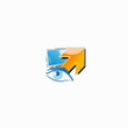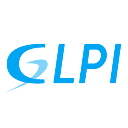Between best practice and software, how can you optimise your IT asset management?
At first glance, IT asset management may seem like an operational formality, but in reality the stakes are much higher.
Between reducing costs and increasing productivity, the optimised administration and maintenance of IT resources have become real performance drivers for businesses.
But they still need to apply best practice, in line with recognised standards ( ITIL standards in particular), new working practices and technological developments.
How can you best manage your IT infrastructure, especially if you don't use a managed services company? What is the best IT management software for your business?
All the answers to these questions can be found in this article 👀.
What is IT asset management?
An IT estate is made up of all the hardware and software resources used within an organisation (computer workstations, servers, software, printers, NAS, etc.).
All these resources need to be rigorously administered and supervised by the Information Systems Department, or ISD. The aim? To adopt the right strategic orientations through optimised management of the various activities associated with the IT estate, including :
- acquisition and renewal of all hardware and software resources ;
- IT maintenance, both preventive and corrective;
- management of the various service providers involved in organising and maintaining the IT estate;
- deploying and maintaining systems to ensure hardware and software security;
- the introduction of good IT practices among the various players in the company;
- strategic management of the IT budget, etc.
What is the importance of optimised IT asset management?
The main benefit of improved management of IT systems lies in boosting the company's overall performance and profitability. This is made possible by, among other things
- better cost control
- longer-lasting equipment
- better anticipation of failures
- greater responsiveness to IT incidents;
- time savings (teams can concentrate more on higher added-value tasks);
- a better understanding of IT tools by everyone in the company.
☝️ But to take advantage of the above benefits, a number of best practices need to be observed, which we will now describe in detail.
7 best practices in IT asset management
#1 Set up and monitor an inventory of your resources
To manage your hardware and software resources properly, you need to start by drawing up and then rigorously tracking an inventory.
We recommend that you set up a CMDB, or Configuration Management Data Base. This database contains all the data relating to your IT estate, as well as a description of the relationships between the various assets that make it up.
Setting up this process gives you a precise view of the make-up of your infrastructure. This makes it easier to :
- make improvements and assess the benefits ;
- Identify obsolete or unused equipment;
- measure the impact of failures.
💡 This practice is one of the fundamentals of the ITIL (Information Technology Infrastructure Library) standards.
#2 Standardise the different jobs
Set up workstation profiles adapted to all members of the company, i.e. standard hardware and software configurations, depending on the business and/or department (marketing, HR, customer service, sales, etc.).
This practice makes it possible to
- save time, particularly when a new employee arrives and is allocated a job that perfectly matches his or her needs;
- put everyone in the company on an equal footing when it comes to IT equipment and software;
- optimise costs by avoiding providing certain employees with licences or equipment that they will not use.
This standardisation must, of course, take account of the specific characteristics of each business, which is why it is so important to communicate well with users beforehand.
#3 Automate IT processes as far as possible
In theory, virtually all IT processes can be automated, from updating software to shutting down workstations and starting up servers.
This automation, made possible by the use of specific software, has a twofold advantage:
- it saves you valuable time, allowing you to focus your energy and that of your teams on important projects;
- it reduces the risk of oversights or errors.
#4 Favour software in SaaS mode
Using software in SaaS mode, hosted externally, relieves the IT Department of the constraints associated with its maintenance and updating.
What's more, hosting data externally frees up space on your servers.
#5 Opt for virtualisation
Virtualisation involves running different IT systems on the same infrastructure.
This process generates significant cost savings for the company, due to :
- fewer servers ;
- energy savings;
- an accelerated disaster recovery plan.
#6 Raise awareness and educate users
Applications installed without IT Department control or approval? Employees using their own equipment ( BYOD, or Bring your Own Device)?
While these practices can be tempting, even for the company, which sometimes sees them as a way of saving money and boosting productivity, beware of the problems of data loss and security.
That's why it's important to educate users about these uses, and of course to reinforce the associated security measures.
#7 Integrate remote IT asset management
Thanks to the use of certain software, it is possible to manage your IT assets remotely. This is often recommended for a number of reasons:
- it's easier to administer and maintain resources for companies that are
- are spread over several sites
- with a high level of teleworking;
- the various interventions or deployments do not have to interrupt employees' work.
8 software packages to manage your IT estate
As you can see, between automating processes, setting up a CMDB and managing your IT estate remotely, you need to use one or more software packages.
Here is a selection of IT asset management or IT service management ( ITSM) solutions that meet the needs of IT Departments in terms of optimising hardware and software resources.
1 of 7
 Freshservice |  ManageEngine Servicedesk Plus |  NinjaOne (ex-NinjaRMM) |  Asset View Suite |  GLPI |  LANDESK Service Desk |  OCS Inventory |
|---|---|---|---|---|---|---|
| For all companies | For all companies | For companies with more than 50 employees | For all companies | For companies with more than 1 employees | For companies with more than 250 employees | For all companies |
| See software | See software | See software | See software | See software | See software | See software |
| Learn more about Freshservice | Learn more about ManageEngine Servicedesk Plus | Learn more about NinjaOne (ex-NinjaRMM) | Learn more about Asset View Suite | Learn more about GLPI | Learn more about LANDESK Service Desk | Learn more about OCS Inventory |
Asset View Suite
Clarilog has used ITIL recommendations to develop Asset View Suite, an IT infrastructure management solution.
IT equipment management, licence management, auditing... the various functionalities of Asset View Suite enable you to rationalise the costs associated with your IT assets and improve the experience of all users.
What's more, thanks to an intuitive interface, you get an overview that makes it easy to exploit your hardware and software configurations.

Asset View Suite
Freshservice
Freshservice uses artificial intelligence and machine learning to manage IT incidents, divert repetitive requests in an automated way and lighten the workload of your IT agents.
The software is also based on the ITIL framework to improve the management and productivity of IT services, speed up resolution times and improve access to systems.
What's more, its rich and secure applications marketplace provides a centralised experience between different products and easier governance.

Freshservice
GLPI
Based on a logic of continuous improvement, GLPI is an open source ITSM that is constantly evolving thanks to various contributions and bug reports from users.
In terms of functionalities, this solution supports, among other things, the inventory and visualisation of the modification history of all your organisation's active hardware and software.
It also has a support module that is compatible with ITIL V2 standards, particularly for incident management.

GLPI
Hector
Hector is an all-in-one hardware inventory management software package that enables you to process hardware loans to your staff, periodic maintenance, stock level monitoring and fleet renewal on a single platform.
You can monitor all your IT assets in real time: equipment loans, losses, breakages, depreciation and maintenance requirements. You can also manage software licences, warranties and serial numbers, all intuitively.
What's more? In the event of hardware breakage, your team can enter a note in the software at the click of a button to plan repairs or replacement.
Landesk Service Desk
Landesk Service Desk is an ITSM tool recommended for optimising and securing your IT assets.
By automating workflows, all teams become more efficient and the costs associated with redundant tasks are reduced.
What's more, the CMDB and the dashboards and reports offered by the software provide real-time visibility of your system's performance. So you can take action more quickly in the event of a failure or a need for improvement.

LANDESK Service Desk
ManageEngine ServiceDesk Plus
To make life easier for network administrators, CIOs and IT managers, the ManageEngine ServiceDesk Plus platform centralises the management of enterprise services.
It provides 4 ready-to-use, ITIL 4-certified ITSM modules for managing incidents, problems, changes and IT assets in compliance with industry standards.
Within an integrated development environment, you can build and parameterise advanced visual workflows to establish standard operating procedures for different business functions.

ManageEngine Servicedesk Plus
NinjaOne
NinjaOne is a comprehensive software package for managing and protecting IT assets, enabling you to remotely monitor your entire system (workstations, computers, cloud infrastructure, network devices, etc.) via a single, highly intuitive interface.
In this way, NinjaOne helps you to guarantee the performance and security of your entire system, even if you have several sites. This centralised approach, together with the many automated functions and alerts available in the tool, saves you precious time.
You can also take advantage of a maintenance mode to deactivate alarms and actions on assets undergoing active maintenance.

NinjaOne (ex-NinjaRMM)
OCS Inventory
The OCS Inventory solution is essentially focused on managing the inventory of your IT assets.
With OCS Inventory, you can easily launch hardware and software inventories. Then use a web interface to get an overview of the results.
You can also take advantage of a remote deployment function to deploy and install software packages on remote computers.

OCS Inventory
How should you choose your IT asset management software?
With so much on offer, choosing IT asset management software is no easy task!
A number of criteria need to be taken into account to ensure you make the right choice.
Asset management functions
To begin with, make sure that your solution provides a complete overview of your IT equipment, by monitoring various elements:
- their status
- their location;
- their history.
Detailed monitoring of software licences and maintenance is also crucial.
The user interface
If the software is too complex, it runs the risk of turning into a gas factory for users, who will then take longer to fully exploit its potential.
So opt for a clear, ergonomic, easy-to-use interface.
Security and compliance
Data protection is no laughing matter!
So make sure your solution complies with the latest security standards. Obviously, certain prerequisites remain essential, such as data encryption and access management.
Don't forget to check that it complies with the regulations in force, particularly those relating to the protection of personal data.
Scalability
In most situations, a company is bound to grow: its IT asset management tool needs to be able to keep pace.
Check, among other things, that your system is capable of adapting to an increase in the number of devices and the addition of new functions. All at no extra cost.
Support and updating
Good IT asset management software should be accompanied by responsive technical support. At the same time, you should opt for a platform that offers regular updates that are easy to deploy.
These two criteria will ensure that any bugs are corrected quickly.
Total cost of ownership (TCO)
Finally, don't overlook the price.
Consider the initial cost, but also the recurring expenses (maintenance, licences, updates, etc.) inherent in the software you are about to acquire. After all, a low price sometimes conceals hidden long-term costs!
What about outsourcing IT asset management?
Despite the number and power of software packages available on the market, outsourcing IT asset management is an obvious choice for many businesses, particularly those that lack competent in-house resources.
💡 Is outsourcing right for you? Here are the other benefits to be gained from this mode of operation:
- you work with experts who are up to date with the latest technologies and trends in the sector ;
- you benefit from a scalable solution, as the service provider can adjust its services in line with your growth;
- You save on infrastructure, ongoing training and recruitment costs;
- you benefit from support that is generally available 7/7, reducing the risk of service interruption;
- you remain proactive if the outsourcing company you use can anticipate and resolve problems before they affect your business.
Outsourcing therefore promises optimised, secure management of your equipment, while freeing up your IT team to focus on its core business. It's a solution you should seriously consider, depending on your situation!
What should we remember about IT asset management?
Between new working practices, competitiveness and productivity issues and problems linked to data security, optimal IT asset management has become an imperative for the modern company.
It's a job that requires both preventive action and rigorous supervision of all its infrastructures, as well as constantly evolving its practices to guarantee performance.
But if you don't use a managed services company, the efficiency of your IT processes can only be guaranteed by the use of software that is perfectly adapted to your needs and the complexity of your infrastructures.
Article translated from French

Currently Editorial Manager, Jennifer Montérémal joined the Appvizer team in 2019. Since then, she's been putting her expertise in web copywriting, copywriting and SEO optimisation to work for the company, with her sights set on reader satisfaction 😀 !
A medievalist by training, Jennifer took a short break from fortified castles and other manuscripts to discover her passion for content marketing. She took away from her studies the skills expected of a good copywriter: understanding and analysing the subject, conveying the information, with a real mastery of the pen (without systematically resorting to a certain AI 🤫).
An anecdote about Jennifer? She stood out at Appvizer for her karaoke skills and her boundless knowledge of musical dreck 🎤.